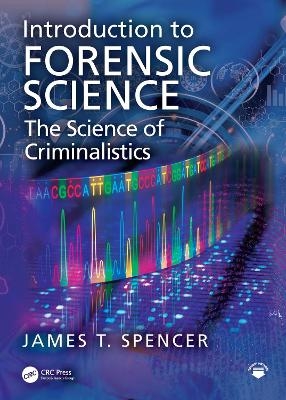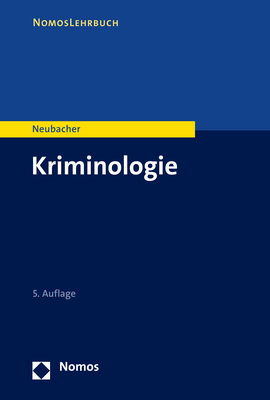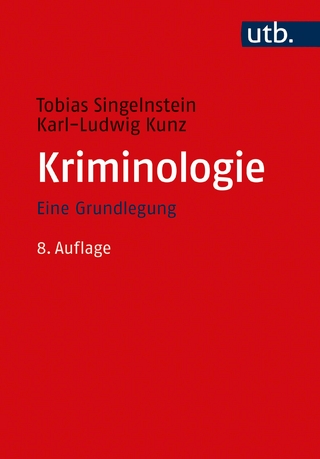
Introduction to Forensic Science
CRC Press (Verlag)
978-1-032-02517-9 (ISBN)
- Noch nicht erschienen (ca. Oktober 2024)
- Versandkostenfrei innerhalb Deutschlands
- Auch auf Rechnung
- Verfügbarkeit in der Filiale vor Ort prüfen
- Artikel merken
Introduction to Forensic Science: The Science of Criminalistics is a textbook that takes a unique and holistic approach to forensic science. This book focuses on exploring the underlying scientific concepts as presented at the introductory college and senior high school levels. Chapters introduce readers to each of the important areas of forensic science, grouping chapters together by discipline and following a logical progression and flow between chapters. This systematically allows students to understand the fundamental scientific concepts, recognize their various applications to the law and investigations, and discern how each topic fits broadly within the context of forensic science.
The writing is accessible throughout, maintaining students’ interest – including both science and non-science majors – while inspiring them to learn more about the field. Concepts are demonstrated with numerous case studies and full-color illustrations that serve to emphasize the important ideas and issues related to a particular topic. This approach underscores scientific understanding, allowing the student to go beyond simple rote learning to develop deeper insights into the field, regardless of their scientific background. This book has been extensively classroom-tested to provide the most comprehensive and up-to-date survey of various forensic disciplines and the current state of the science, policies, and best practices.
Key features:
Presents a wholly new, fresh approach to addressing a broad survey of techniques and evidentiary analyses in the field of forensic science.
All concepts – and the underpinnings of forensic practice – are explained in simple terms, using understandable analogies and illustrations to further clarify concepts.
Introduces topics that other introductory texts fail to address, including serology, behavioral science, forensic medicine and anthropology, forensic ecology, palynology, zoology, video analysis, AI/computer forensics, and forensic engineering.
Highly illustrated with over 1,000 full-color photographs, drawings, and diagrams to further highlight key concepts.
Suitable for both high school senior-level instruction and two- and four-year university courses for majors, non-majors, and criminal justice students enrolled in introductory forensic science classes.
Support Materials – including an Instructor’s Manual with test bank and chapter PowerPoint lecture slides – are available to professors with qualified course adoption.
James T. Spencer is the Laura J. and L. Douglas Meredith Distinguished Teaching Professor, a Fellow of the Syracuse University Center of Excellence, and Founding Executive Director of the Syracuse University Forensic and National Security Sciences Institute (FNSSI) at Syracuse University (SU) in Syracuse, New York, USA. Dr. Spencer has research interests in inorganic chemistry, organometallic chemistry, materials chemistry and solid-state science, new sensor development, renewable energy systems (photovoltaic), and forensic science, and has taught various courses over the years including, most recently, on chemistry in the modern world, general chemistry, organometallic chemistry, forensic science and advanced forensic science, and scientific and career resources in forensic science. He has received numerous awards for his work, including the Chancellor’s Citation for Excellence, the highest award for SU faculty and staff, in recognition of outstanding achievement in teaching and scholarship. Dr. Spencer holds a B.A. in Chemistry and a Ph.D. in Inorganic Chemistry from SUNY Potsdam, and has been published widely in many professional and society journals. He has received the Chancellor's Citation for Excellence, the highest award recognition for SU faculty and staff in recognition of outstanding achievement in teaching, scholarship and creative work.
Part 1 Introduction
1. Introduction, Historic Development, and Legal Roles of Forensic Science
2. Crime Scene Investigations
3. Science, Pseudoscience, and the Law
Part 2 Biological Evidence
4. Methods for Examining Biological Evidence
5. Forensic DNA
6. Forensic Serology
7. Anatomical Evidence: The Outside Story
8. Forensic Medicine: The Inside Story
9. Forensic Anthropology
10. Forensic Ecology
Part 3 Chemical Evidence
11. Overview of Chemical Evidence
12. Forensic Spectroscopy
13. Forensic Toxicology
14. Forensic Fire and Explosives
Part 4 Physical Properties in Evidence
15. Physical Properties: Mineralogical, Soil, Glass, and Paint Analysis
16. Firearms, Ballistics, and Impression Evidence
17. Forensic Document, Photo, Video Analysis, Voice ID and Linguistics
18. Forensic Engineering and Computer Science
Part 5 Behavioural Forensic Evidence
19. Behavioral Forensic Science
| Erscheint lt. Verlag | 7.10.2024 |
|---|---|
| Zusatzinfo | 49 Tables, black and white; 178 Line drawings, color; 27 Line drawings, black and white; 855 Halftones, color; 71 Halftones, black and white; 1033 Illustrations, color; 98 Illustrations, black and white |
| Verlagsort | London |
| Sprache | englisch |
| Maße | 210 x 280 mm |
| Gewicht | 453 g |
| Themenwelt | Naturwissenschaften ► Biologie |
| Naturwissenschaften ► Chemie | |
| Recht / Steuern ► Strafrecht ► Kriminologie | |
| Sozialwissenschaften | |
| ISBN-10 | 1-032-02517-4 / 1032025174 |
| ISBN-13 | 978-1-032-02517-9 / 9781032025179 |
| Zustand | Neuware |
| Haben Sie eine Frage zum Produkt? |
aus dem Bereich


